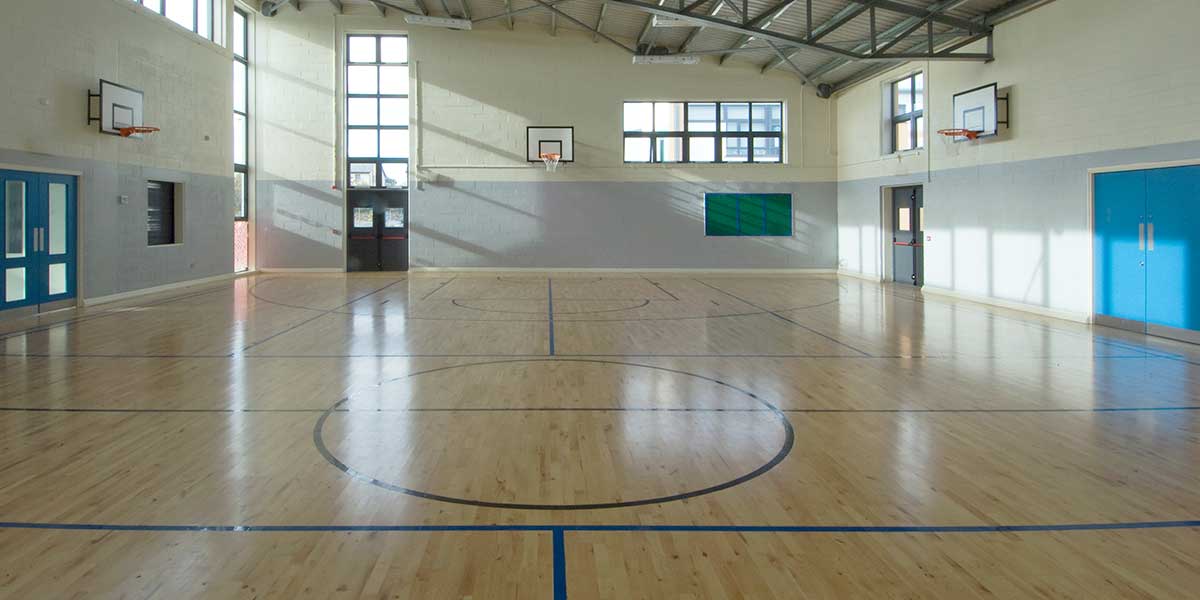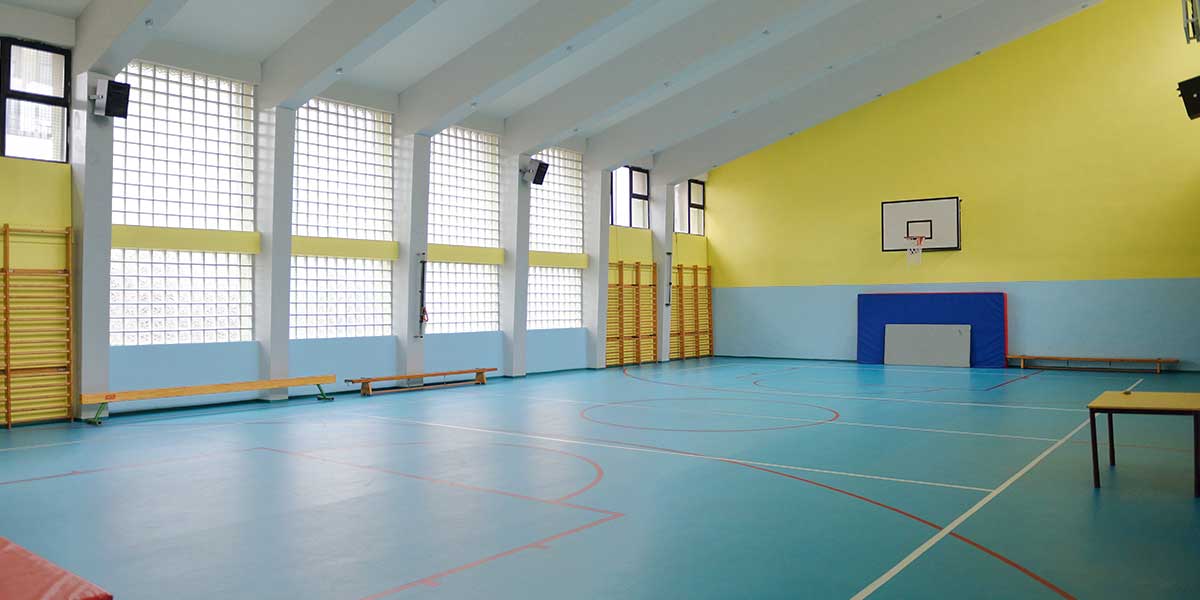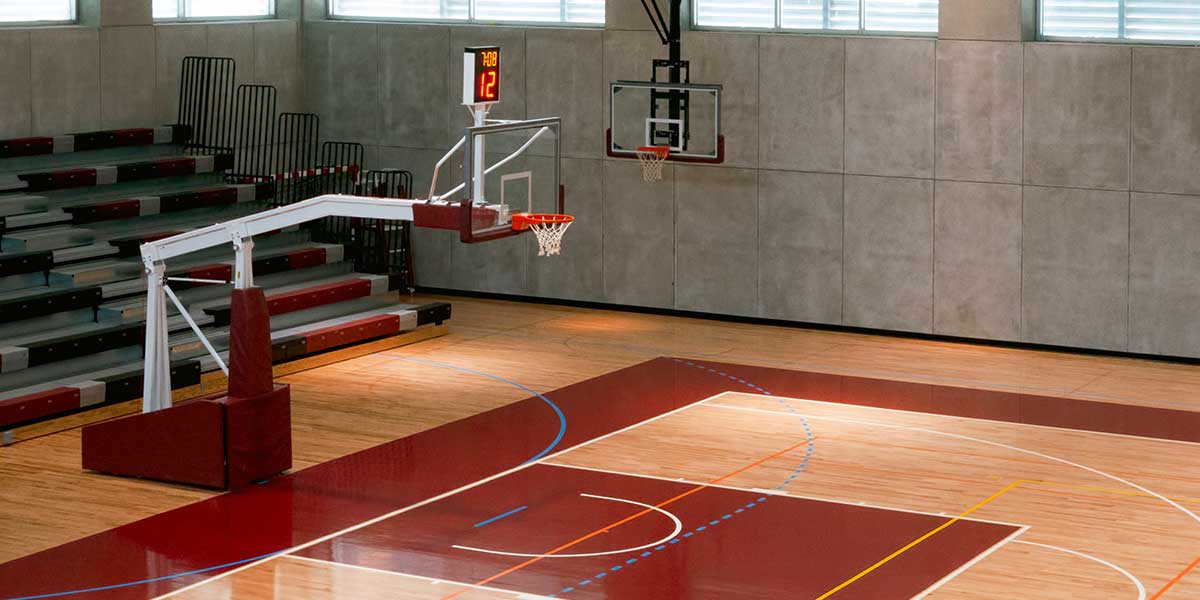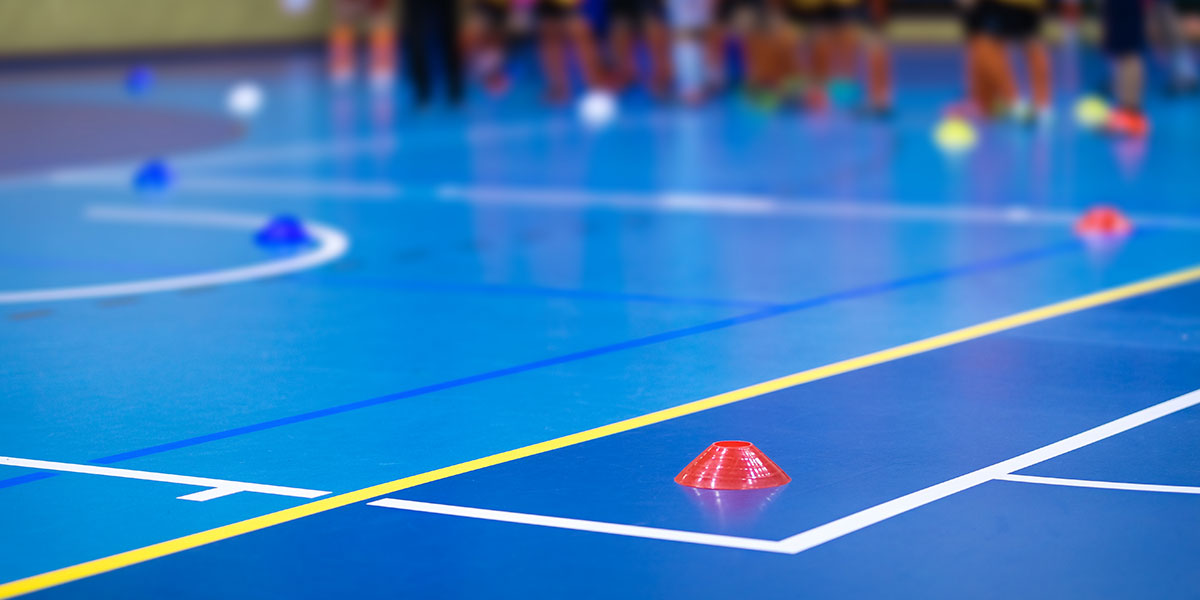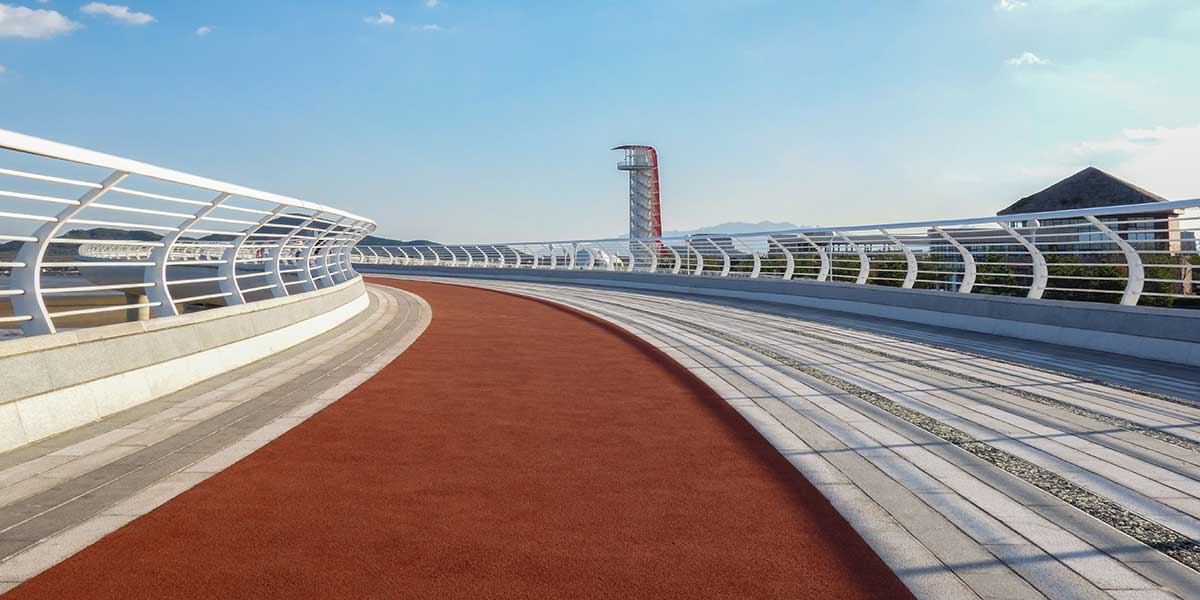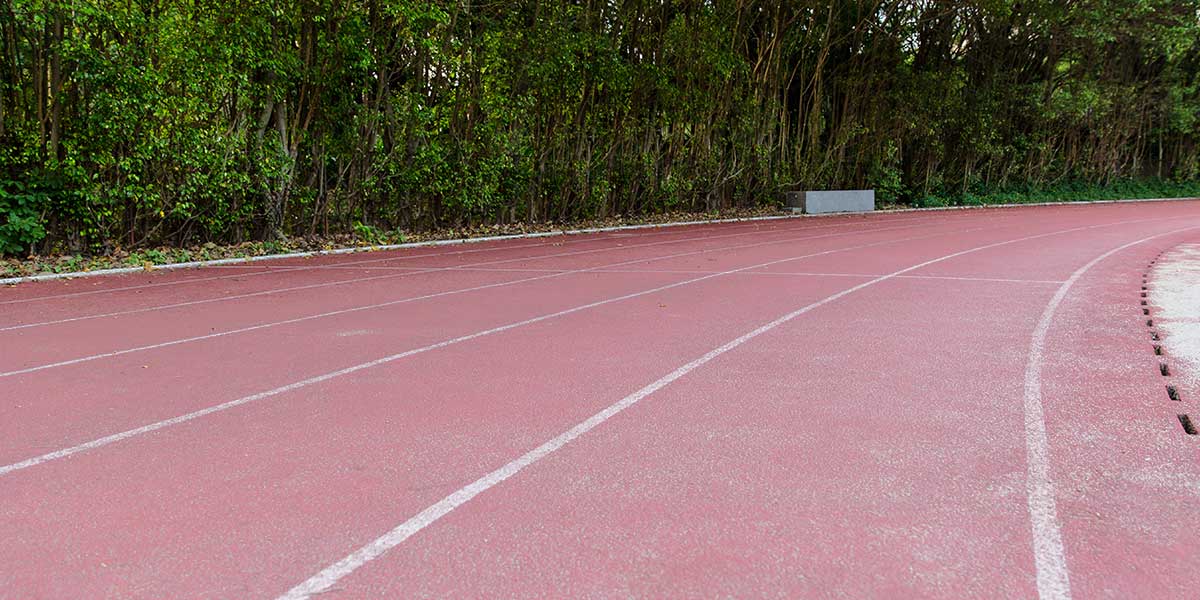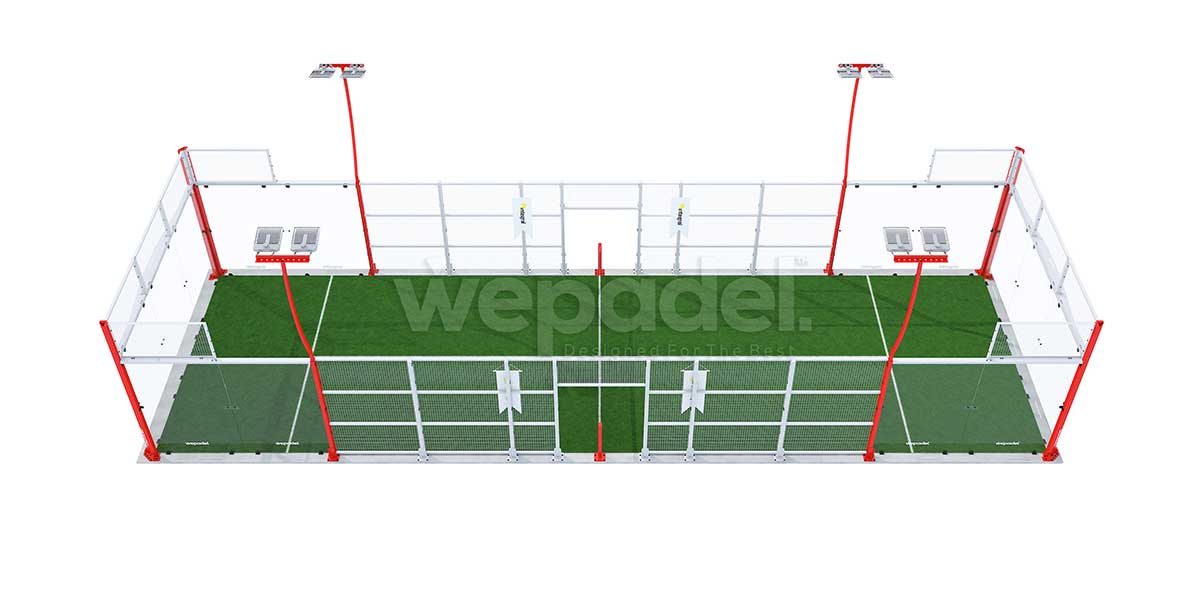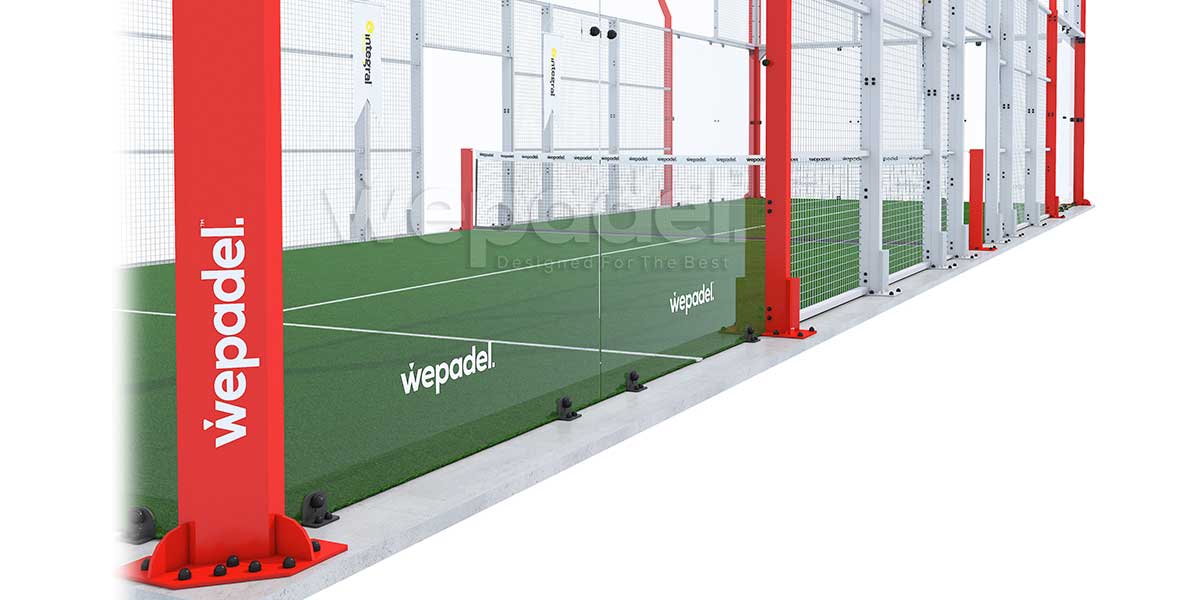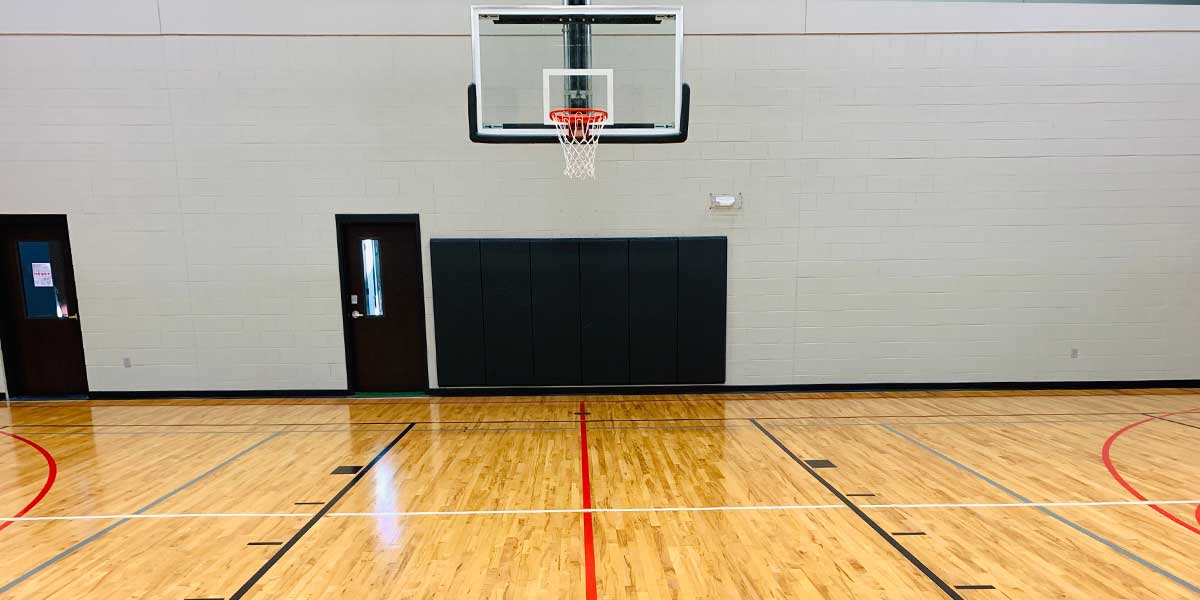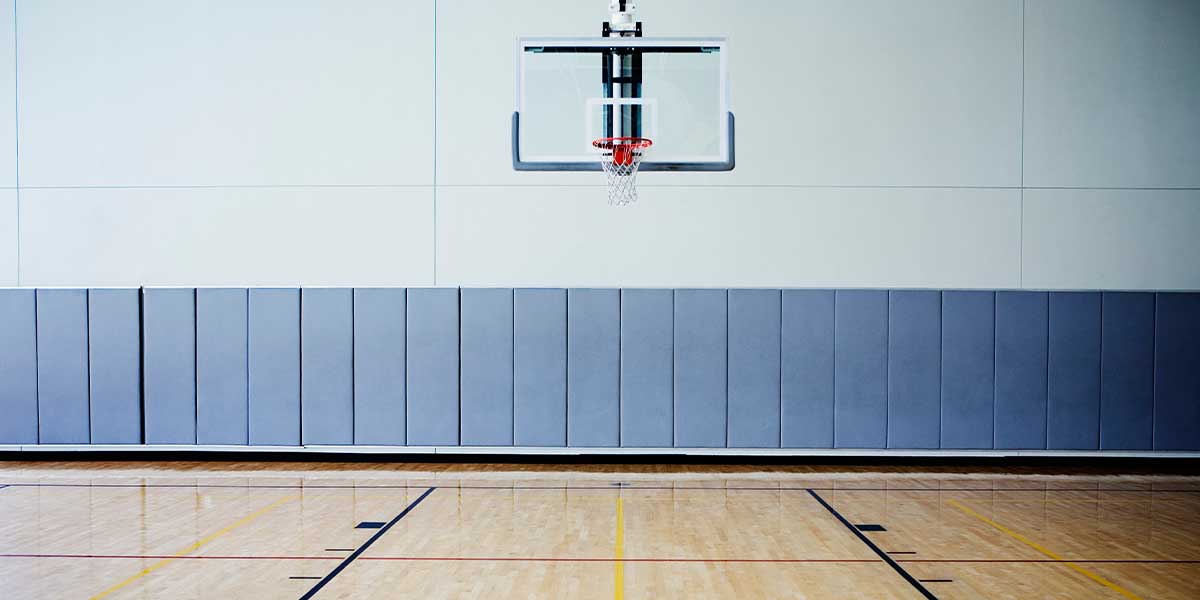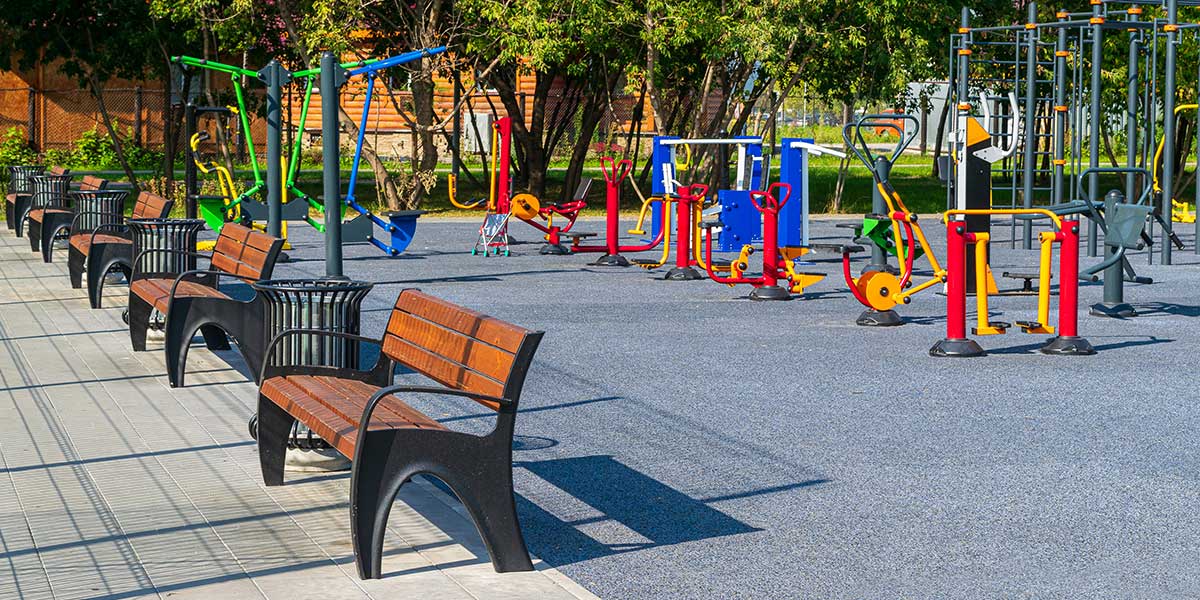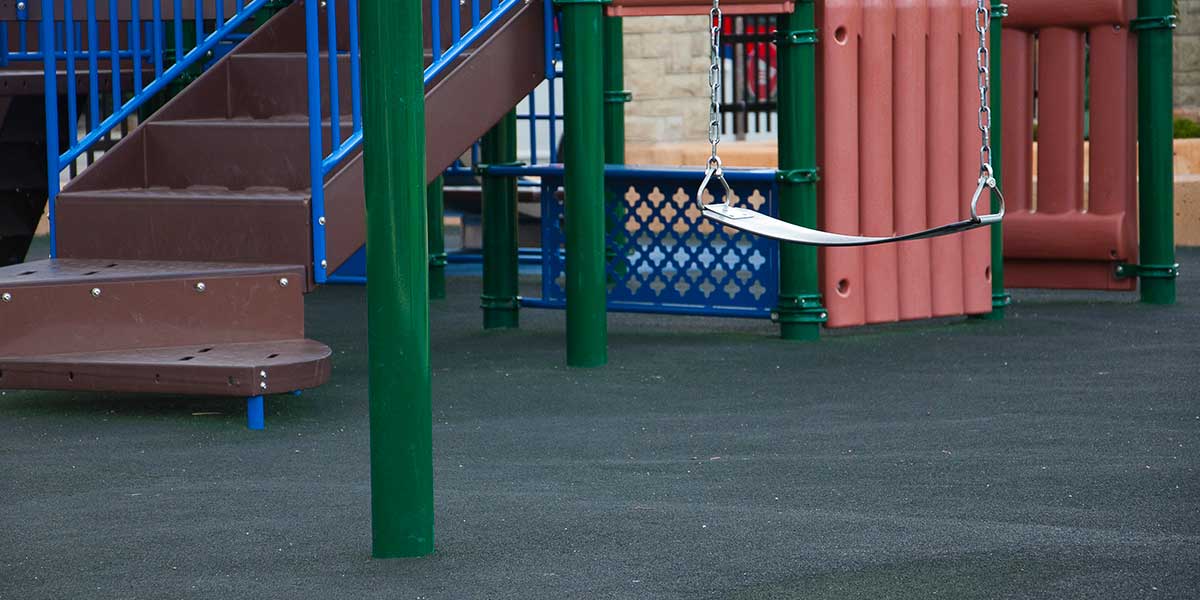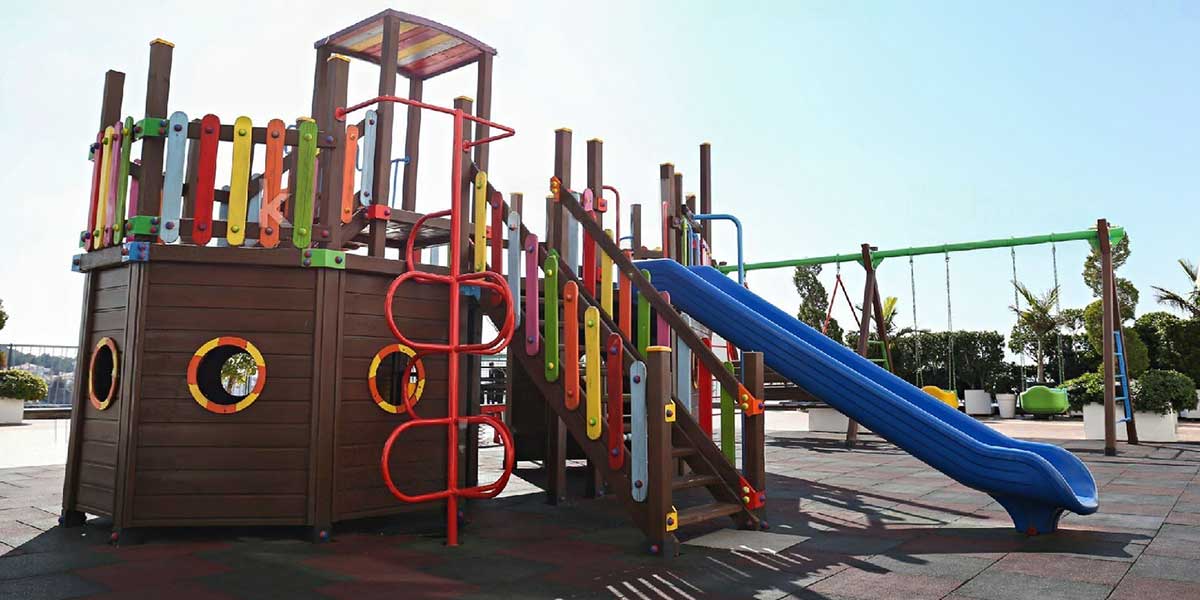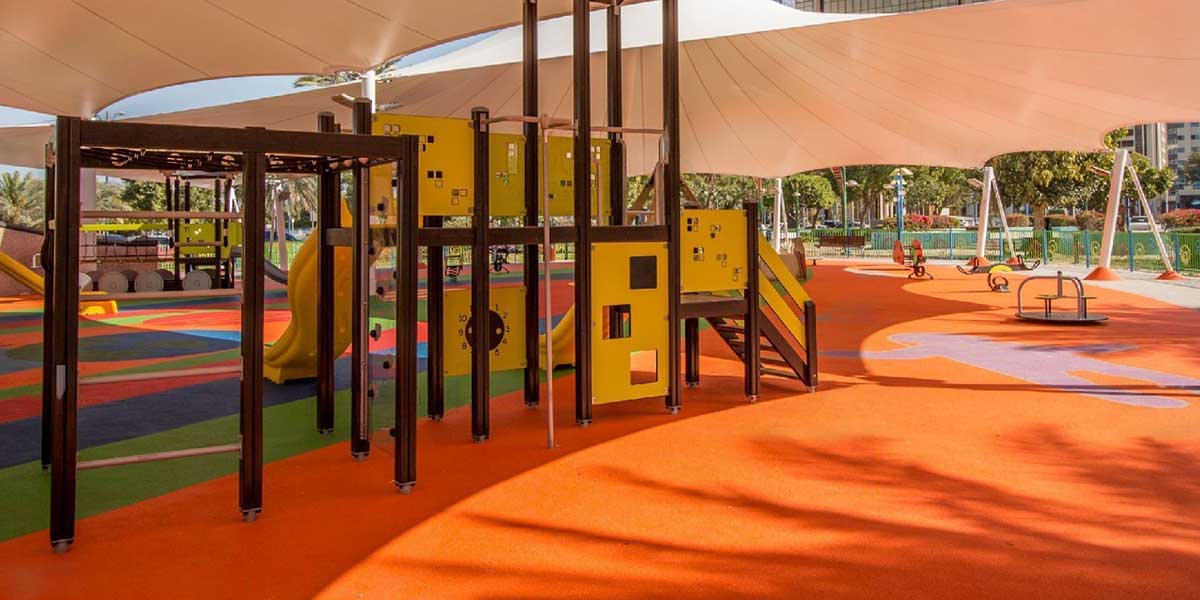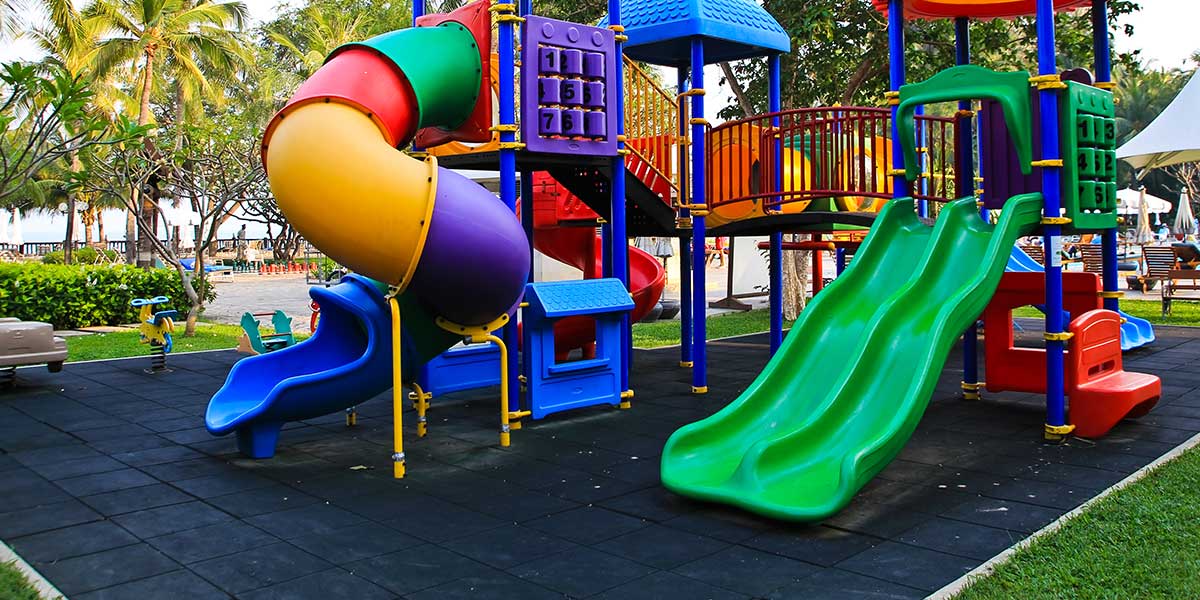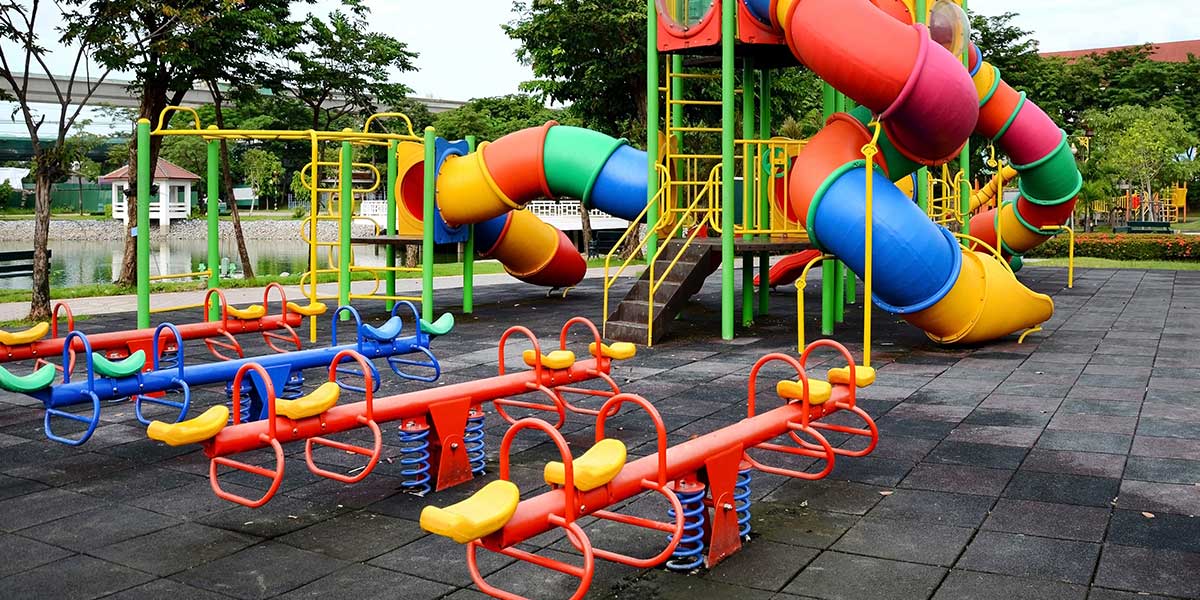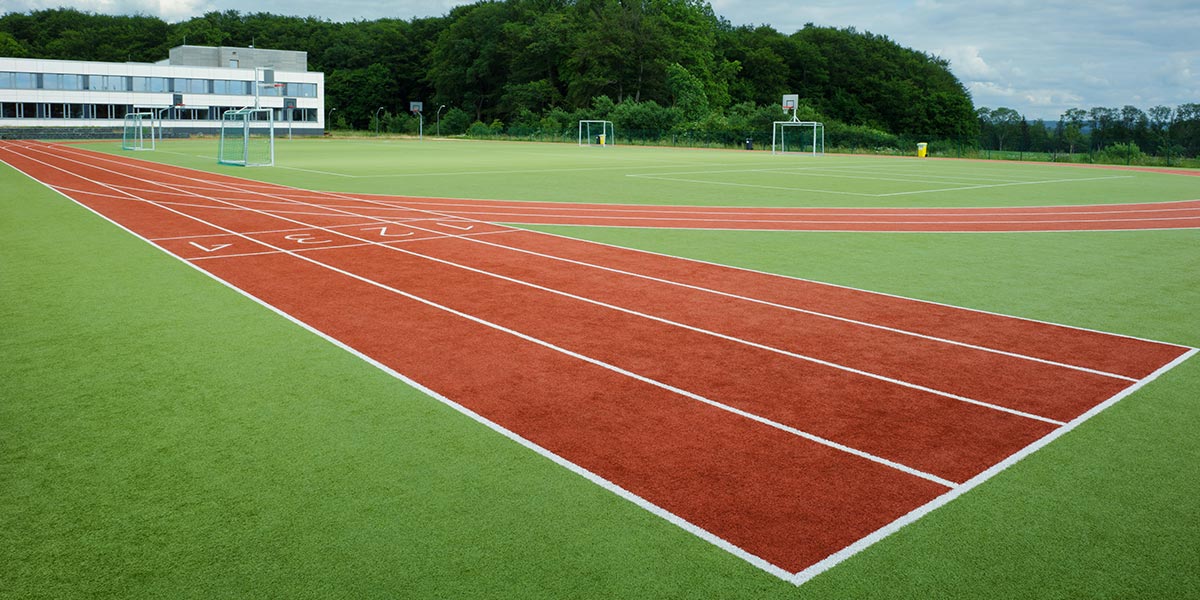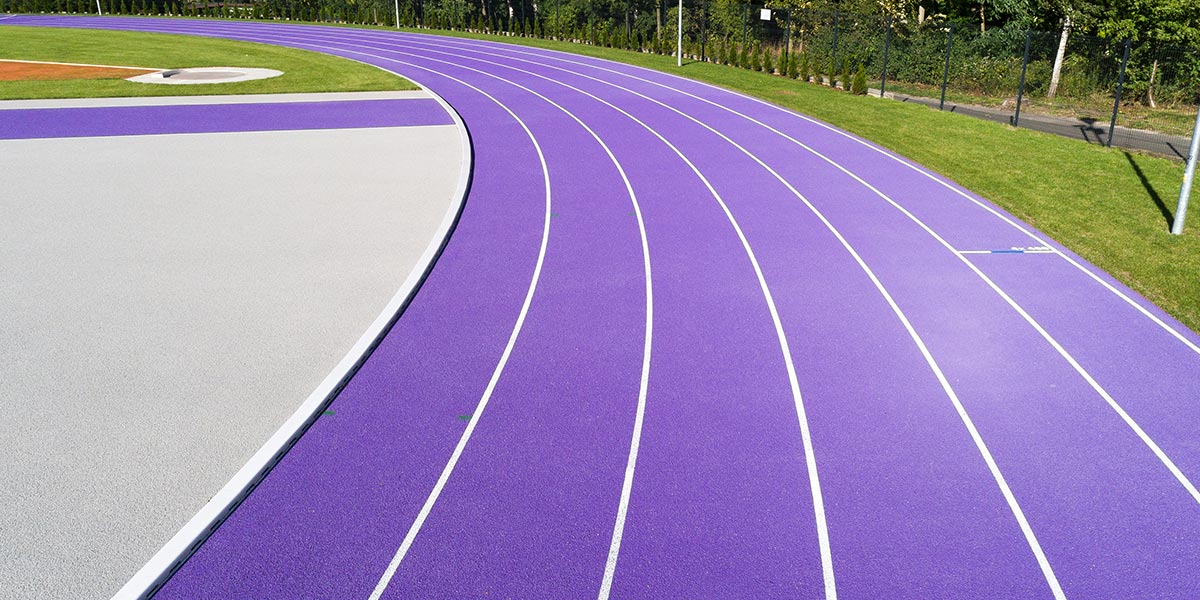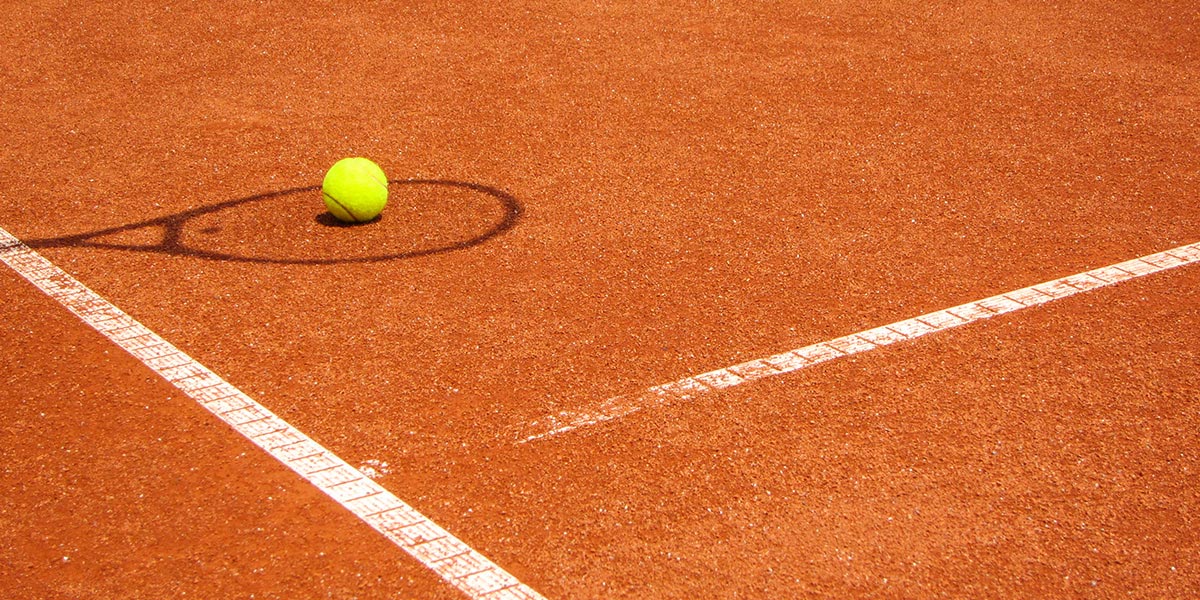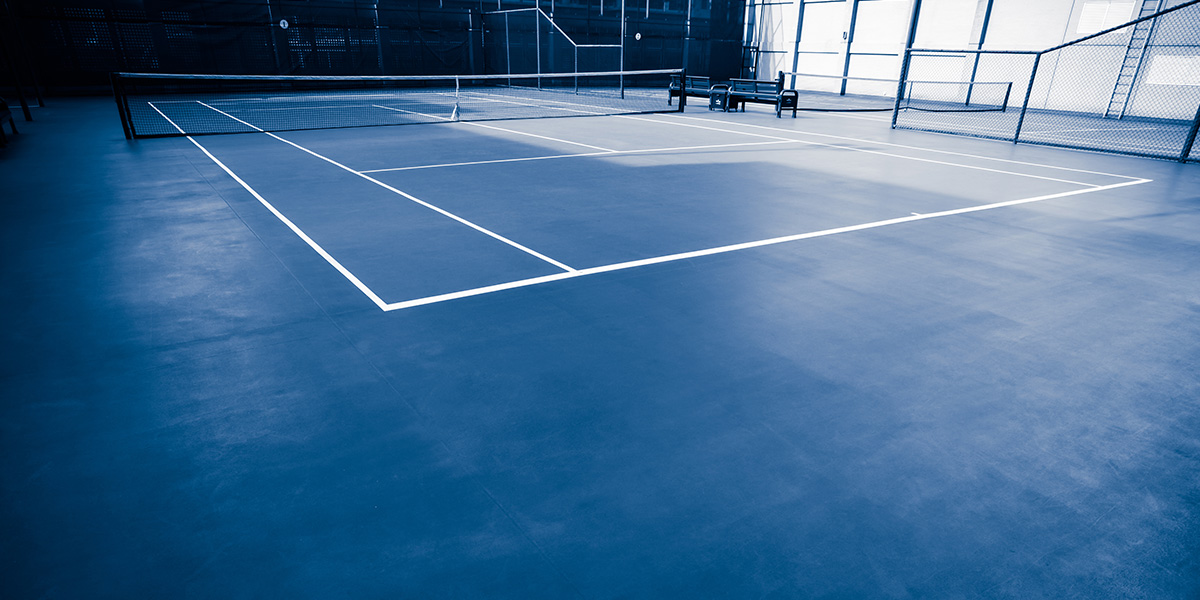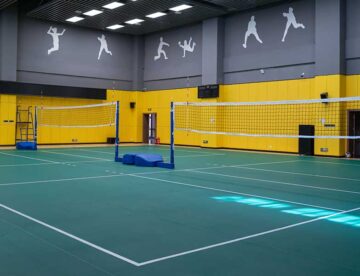
A sports hall is a place where many types of sports flooring productions. But, what are the details about these productions? Let’s check together!
What is Sports Hall?
A sports hall is an indoor facility designed for sporting activities such as basketball, volleyball, badminton, handball, and other indoor sports. It is typically a large, enclosed space with a high ceiling and various lines and markings on the floor to indicate the boundaries of different sports. Sports halls may also have seating areas for spectators, locker rooms and shower facilities for athletes, and equipment storage areas. They are built regarding the details like indoor sports complex requirements.
What is Sports Hall Flooring? What Are the Types of Sports Flooring?
Sports hall flooring refers to the surface of the indoor facility where sports and other physical activities take place. The flooring of a sports hall must be suitable for the specific activities that will be taking place on it and must meet certain safety and performance standards.
Sports hall flooring is typically made of hardwood, synthetic materials, or a combination of both. Hardwood floors are common in basketball and volleyball courts and are known for their durability and shock absorption. Synthetic floors, such as those made of rubber or PVC, are often used for sports such as badminton and handball and are known for their high traction and cushioning properties.
Regardless of the material used, sports hall flooring must be designed to minimize the risk of injury and provide a stable, even surface for athletes to perform on. Factors such as shock absorption, slip resistance, and ball bounce are all taken into consideration when choosing and installing sports hall flooring.
What Features Does Sports Hall Flooring Have?
Sports hall flooring has a number of important features that make it suitable for use in indoor sports facilities. Here are some of the key features of sports hall flooring:
- Shock absorption: Sports hall flooring must be able to absorb the impact of athletes jumping and running, in order to reduce the risk of injury.
- Ball bounce: Different sports require different levels of ball bounce, so sports hall flooring must be designed to provide the appropriate level of bounce for each sport.
- Traction: Sports hall flooring must provide enough traction to prevent athletes from slipping or sliding during play, while also allowing them to move freely.
- Durability: Sports hall flooring must be able to withstand heavy use and regular maintenance, and should have a long lifespan.
- Easy maintenance: Sports hall flooring should be easy to clean and maintain, in order to ensure a hygienic environment for athletes.
- Safety: Sports hall flooring must meet safety standards and regulations to minimize the risk of injury to athletes.
Overall, sports hall flooring must be carefully designed and installed to ensure optimal performance, safety, and comfort for athletes.
What Are the Prices of Sports Hall Flooring?
The cost of sports hall flooring can vary depending on a number of factors, such as the type of flooring material, the size of the facility, and the complexity of the installation process. Here are some rough estimates of the cost of different types of sports hall flooring:
It’s important to note that these are rough estimates, and the actual cost of sports hall flooring will depend on a number of factors specific to your facility. It’s a good idea to consult with a flooring contractor or manufacturer to get a more accurate estimate based on your needs and budget.
Where to Get Sports Hall Flooring?
Sports hall flooring can be obtained from a variety of sources, depending on your needs and preferences. Here are some options for where to get sports hall flooring:
- Sports hall builder: Many companies specialize in producing sports hall flooring, and can provide customized solutions to meet your specific needs.
- Sports equipment suppliers: Companies that sell sports equipment, such as basketball hoops and volleyball nets, may also offer sports hall flooring as part of their product line.
- Flooring contractors: Flooring contractors can install sports hall flooring and provide advice on the best type of flooring for your facility.
- Online retailers: There are a number of online retailers that specialize in sports hall flooring, and offer a range of options to choose from.
When choosing where to get sports hall flooring, it’s important to consider factors such as the type of hall like indoor sports hall, cost, quality, and customer service. It’s also a good idea to read reviews and check references before making a final decision for a multi-purpose indoor sports complex.
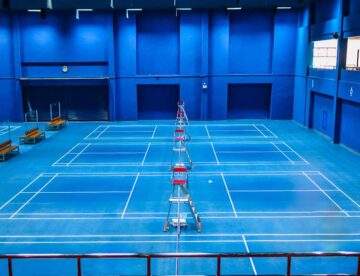
Synthetic flooring materials offer a wide range of potential applications beyond traditional flooring. One such application is the creation of sports surfaces for indoor and outdoor sports fields using materials like rubber and polyurethane. Other possible usage areas for synthetic flooring materials include protective mats and tiles for playgrounds, gymnasiums, and industrial settings. These materials can also be used to create custom-designed surfaces for dance studios, event venues, and even boat decks. In short, the versatility of synthetic flooring materials makes them an attractive option for a range of industries and settings.
What Is Synthetic Flooring Material?
Synthetic flooring materials are human-made materials that are designed to provide a durable and safe surface for sports and other activities. Several types of synthetic flooring materials are commonly used in sports halls and other indoor facilities. Here are some examples:
- PVC: PVC flooring (polyvinyl chloride) is a type of synthetic flooring material that is popular for its durability, slip resistance, and low maintenance requirements. PVC flooring roll is often used in sports such as badminton, table tennis, and volleyball.
- Rubber: Rubber flooring is another popular option for sports halls, thanks to its shock absorption and noise reduction properties. It is often used for sports such as basketball, handball, and indoor soccer.
- Polyurethane: Polyurethane flooring is a synthetic material that is known for its high level of impact resistance and durability. The polyurethane flooring system is often used in sports such as weightlifting and gymnastics.
- Epoxy: Epoxy or tartan flooring is a durable and easy-to-clean option that is often used in sports halls and other high-traffic areas. It is known for its resistance to chemicals and moisture and can be customized with a range of colors and patterns.
Overall, synthetic flooring materials provide a safe and durable surface for indoor sports and other activities and can be customized to meet the specific needs of your facility.
What Are The Advantages of Synthetic Flooring Material?
There are several advantages to using synthetic flooring material in sports halls and other indoor facilities. Here are some of the key benefits:
- Durability: Synthetic flooring materials are designed to withstand heavy use and can last for many years with proper maintenance. This can help reduce the need for frequent replacements and repairs, saving time and money in the long run.
- Safety: Synthetic flooring materials are often designed with safety in mind, with features such as slip resistance, shock absorption, and cushioning properties. This can help reduce the risk of injuries to athletes and other users.
- Versatility: Synthetic flooring materials can be customized to meet the specific needs of your facility, with options for different colors, patterns, and textures. They can also be designed to provide the appropriate level of ball bounce and traction for different sports.
- Low maintenance: Synthetic flooring materials are typically easy to clean and maintain, with minimal need for waxing or polishing. This can save time and money on cleaning and maintenance costs.
Overall, synthetic flooring materials provide a safe, durable, and customizable option for indoor sports and other activities. When choosing a synthetic flooring material, it’s important to consider factors such as the type of sport or activity, the level of traffic in the facility, and the specific needs and budget of your organization.
Where to Use Synthetic Flooring Material?
Synthetic flooring material can be used in a wide range of indoor facilities, depending on the specific needs of the organization. Here are some examples of where synthetic flooring material is commonly used:
- Sports halls: Synthetic flooring materials are often used in sports halls for a variety of sports, including basketball, volleyball, badminton, handball, and indoor soccer.
- Gyms and fitness centers: Synthetic flooring materials can provide a durable and safe surface for gym and fitness center activities, such as weightlifting, cardio exercise, and group fitness classes.
- Dance studios: Synthetic flooring materials with cushioning properties, such as vinyl or rubber, can provide a safe and comfortable surface for dance studios.
- Hospitals and healthcare facilities: Synthetic flooring materials with slip resistance and antimicrobial properties can help reduce the risk of slips and falls, and can be easy to clean and maintain.
- Schools and universities: Synthetic flooring materials can be a good option for school and university facilities, providing a durable and low-maintenance surface for indoor sports and other activities.
Overall, synthetic flooring material can be a good option for any indoor facility that requires a durable, safe, and customizable surface. When choosing a synthetic flooring material, it’s important to consider factors such as the specific needs of your organization, the level of traffic in the facility, and the budget for installation and maintenance.
What Is the Cost of Synthetic Flooring Material?
The cost of synthetic flooring material can vary widely depending on a number of factors, such as the type of material, the size and layout of the facility, and the level of customization required. For example, PVC flooring price will be different than tartan flooring.
It’s important to note that these are general price ranges, and the actual cost of synthetic flooring material will depend on the specific needs and requirements of the facility. Factors such as installation costs, maintenance requirements, and the need for additional features such as lines and logos can also impact the overall cost of the project. It’s recommended to get a quote from a reputable supplier or contractor to get a more accurate estimate of the cost of synthetic flooring material for your specific project.
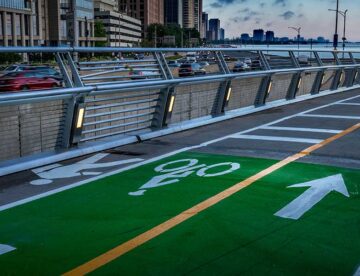
The best exercises to protect our health from the harmful effects of the modern sedentary lifestyle are walking and running. Due to the use of special shock-absorbing ground, our walking areas help you feel less tired while walking. As a result, you can run and walk longer and more enjoyable. Avind creates walking areas with a variety of ground types and sizes, offering services that meet international standards. For your physical and mental health, walking is a very beneficial and simple sport.
Since walking paths are made of high-quality raw materials, athletes’ health is protected and their performance is enhanced. Because of their unique grounds, walking paths are cushioned and shock-absorbing.
What Are the Advantages of Walking Paths Installed by Avind?
Walking path construction offers many advantages for different areas:
- Walking paths can be used 24 hours a day, 365 days a year, and are resistant to all types of weather and climatic conditions.
- The disabled can walk on designated walking paths.
- The temperature range for walking paths is -40 to +120 C.
- Walking paths don’t deteriorate. They are simple to maintain and clean.
- Natural and environmentally friendly materials are used to construct walking paths.
- They are never muddy, non-slippery, or covered in moss.
- Walking paths have a 45-ton weight capacity.
Where to Construct Walking Paths?
In addition to being aesthetically pleasing, walkways and paths can connect important and useful parts of your garden or lawn, providing a logical flow to the space. This means you will use the space more often and more effectively. Therefore, beautiful and practical walking paths in the backyard can add value to your home. There are a few key points to keep in mind when choosing garden paths or walkways.
What is Walking Path Flooring?
One of the areas where flooring products are used most frequently is walking paths. Walkway flooring is made with products with different properties. Floor covering products, which are specially produced for the comfort and health of people who will use the walking paths, have important superior features. Among these features, it is noteworthy that it has a flexible structure and protection against impacts. Thanks to the flexible structure of these floors, people who do sports are less tired. As a result, we offer you floor coverings with superior features.
Floor coverings made for walkways are produced in a structure against water accumulation. Thanks to its structure in heavy rainy weather, water accumulation events do not occur on the ground. Walkway floor coverings, which are preferred due to their long-lasting use, can be easily cleaned. Various patterns can be made on floor coverings, which can be made with different decorative features. The products, which are also very important in terms of health due to their non-slip feature, are resistant to weather conditions.
What Are the Advantages of Walking Path Flooring?
Floor coverings used on walkways are produced with different materials. Floor coverings produced with different products have various names. Among the most used walkway flooring products are epoxy, polyurea, and polyurethane. Walkway pavements produced with high durability features have a soft feature. Floor coverings that do not deteriorate due to their resistance to harmful sun rays can be used for long periods of time.
What is the Cost of Walking Path Construction?
It is not possible to give clear information about the cost to build a walking trail. Because the price of a walking path may vary according to the size of the trail, the features of the area, and the flooring type.
You can get in contact with Avind for further information and more cheap garden path solutions!
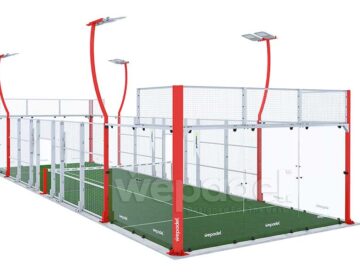
Perhaps where artificial grass is used mostly is the sports fields. Sports played outdoors make use of this product a lot to cover the ground. Padel court is one of the examples of the sports fields where synthetic turf is widely preferred for the surface cover.
You might have heard before that artificial grass is today the most preferred type of floor covering in sports fields as well as its other kinds of usage. Ranging from football to basketball, golf to volleyball, tennis to padel tennis, synthetic turf has become the most in-demand and advantageous way of surface cover application to the ground.
It is so widely selected because it is easier to keep hygienic and thus healthy, it lowers the risk of injuries or severe health issues in case of an inconvenience, enhances the players’ performances during trainings or professional games and enable them to move freely and fast, walk, run, or slide easily. But of course, these are just some of the examples we can mention about its never-ending list of benefits. This list doesn’t end here and there are lots of other pros that we can talk about.
If you have been searching for padel tennis manufacturers, then you are at the right place. We would love to inform you about padel tennis court construction with artificial grass. Let’s continue our next section mentioning a little bit about padel tennis.
About Padel Tennis
Even though played relatively lesser than regular tennis, padel tennis is also so popular around the world by people of all ages. Today, padel tennis is performed worldwide more than 90 countries with so many players and fans. It is type of a sport that is performed with a racket and it can be surely said that padel tennis is growing more and more popular each day as the time progresses.
Padel tennis is a type of a tennis that combines the elements of the other racket sports badminton and squash. Its origins date back to 1970’s and this sport branch is designed in Mexico.
Since it is a different branch from tennis, we can differentiate them in some rules of the game. Padel rackets and balls are different from regular tennis rackets and balls. Padel tennis is played with four players on court in doubles, in short it is played by two doubles teams. On the other hand, tennis can be played by single players on each side of the court or doubles as padel tennis. The in-game rules may differ in some points as well. For example, in padel tennis the ball can hit the walls whereas in tennis, it is not accepted. In addition, padel court sizes are smaller than regular tennis courts.
Padel Tennis Court Types We Offer
We construct different types of padel tennis court according to the needs of the customers. In construction processes, what we have in our minds as the primary thing is to deliver the project in line with the specifications made by the customers themselves and provide them with the best sport systems at the end. It is what makes us get the best feedbacks from our customers about their completed projects.
From roofed padel tennis court to two different types of classic padel tennis courts and three types of panoramic padel courts, we build different padel court types. If you wish to see them more in detail and view their properties, we invite you to visit our website and see them in our catalogue in detail.
Padel Tennis Court Construction with Artificial Grass
Padel tennis court building process should be done by a professional company with expert workers who construct quality sports systems. Our company serves the best when it comes to the padel tennis court construction thanks to the years of experience we have and our meticulous and detailed approach. That’s why we get positive feedbacks from our beloved customers and work hard to meet their expectations.
Padel court construction with artificial grass is not a difficult task when it is carried out by professionals. They start by carrying out the infrastructure preparation and continue with steel work. Then the artificial grass carpets are spread out diligently and evenly till they reach the edges of the court and if it is necessary, the extra parts are cut. At the end, other necessary padel equipment find their places on the court and then, the construction work is done.
You can contact us if you want to get help for your padel court construction project. We would love to help you.
Contact Us!
Padel court cost changes depending on the type, dimensions, floor covering materials and other necessary points. If you are looking for padel court for sale, you can visit our website. You can also easily contact us by filling out the form given below.
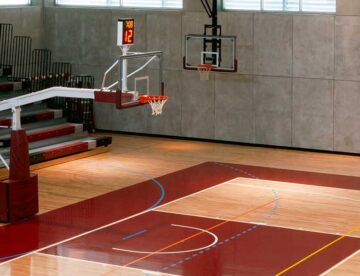
Hardwood floors are the first thing that comes to mind when people think about the gym floor. The most popular indoor sports floor type is Hardwood and is always preferred on basketball courts. This type of flooring is strong, sturdy. There are also numerous design options, including tool colors and emblems. Hardwood basketball court floors also have sub-floor systems that help shock absorption, and portable Hardwood flooring systems can also be installed.
The only disadvantage of the hardwood floor basketball court flooring may be that it requires too much maintenance. Especially scratches are quite typical, so maintenance and cleaning should be done. The first step in determining which flooring solution is appropriate for any sports ground is to learn how to use the floor. It is very important to decide which sports and physical activities will be done and which ground pressures will be used. In our article, we will explain the indoor basketball court construction basketball court, including the hardwood basketball court installation, basketball court construction cost. Once created, it meets a large number of societal norms in terms of performance, safety, adaptability, and longevity. Hardwood basketball court cost and the maintenance costs together with the service are additional issues to be considered in the decision-making process.
The traditional floor material for a basketball court is Hardwood. Wooden gym flooring is a long-lasting, high-performance and safe flooring option, perfect for basketball. It is typically made of premium maple. Basketball court construction is a particularly popular area of use. Sports floor coverings made of laminated Hardwood are formed by gluing a large number of wooden layers on top of each other and vertically on a wet surface. The system is installed so that when exposed to wood moisture, it intersects with natural water flow directions and prevents moisture from penetrating the wood.
Generally, the wooden sports floor coverings are designed to be flexible and non-slip, making them ideal for sports areas. Wooden models are available for selection in various colors and patterns. The laminated wooden Hardwood system has been made more flexible by placing plastic wedges between the layers. Professional basketball is the best option for indoor sporting events. Especially professional basketball competitions are organized on the Hardwood sports fields. The above-mentioned multi-layer laminated systems are even used in special leagues such as the NBA.
How Should the Field Dimensions Be?
Field measures for professional basketball matches were created by the International Basketball Federation. These rules state that the long edge or length of a rectangular area is 28 meters and the short edge or width is 15 meters. In case of basketball court installation, two semi-pitches are formed by dividing with a line in the middle. The rectangular part of the crucible measures 1.8 x 1.2 meters and lies within 1.2 meters of the short edge line. The circle on the backrest is 45 cm in diameter and 3.05 meters high from the ground. It is the measurement from the projection of the 6.75 meter circle to the ground to the edge of the half circle where 3 number shots are made. The distance between the short edge and the free throw line is 5.80 meters and the length of the line is 3.60 meters.
Hardwood Floor Advantages
- Hardwood basketball flooring outdoor is reliable, affordable and attractive.
- The typical life span of hardwood floors is ten years. (This life depends on routine maintenance, cleaning and preventive measures.)
- The hardwood flooring provides excellent shock absorption, which reduces injuries.
- Hardwood flooring is the best choice for good ball splash and response time.
- It’s simple to clean.
- Every four to eight years, hardwood floors can be repainted, giving you the chance to change color and have a fresh finish.
We will provide you with the best and fastest service possible because of our experience, expert team, and diligent staff. Furthermore, by presenting the greatest flooring materials at home and overseas, we provide help even after the installation. With this guidance, you will be able to address any problems you may have fast and successfully.
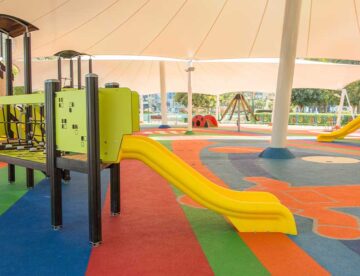
What is rubber floorings? Rubber flooring is a type of flooring that is generally preferred in hospitals and sports halls. It is preferred in these areas because it is safe, comfortable and durable. Rubber floor is obtained by combining rubber dough with sulfur and undergoing several processes. But now it has started to be preferred in our homes, children’s play areas and many other areas.
Rubber floor tiles is the floor that should be preferred for creating children’s playgrounds or our own exercise areas at home. It has a noise-absorbing feature and is a very sheltered and soft floor type.
What is a rubber floor in this article? How should rubber floor care be? And what are the advantages of rubber flooring? We will provide answers to questions such as.
What Are the Advantages of Rubber Flooring?
Rubber flooring is quite advantageous for a gym flooring tiles. It is the safest and longest lasting floor type that can be chosen for gyms. It is possible to list the advantages of using rubber floors as follows:
- Rubber material has a very flexible structure. Therefore, it provides a lot of comfort and confidence to the person on it. Thanks to this feature, it allows the muscles to move more easily and minimizes the signs of fatigue.
- Waterproof rubber flooring is resistant to moisture and chemical decomposition. It is stain-proof and mold-proof.
- Rubber flooring can also carry heavy loads without bending or tearing. That is, it has a high resistance feature.
- Rubber flooring tiles can be used for many years as long as the maintenance is done regularly and carefully. Since it is very difficult to wear, puncture or tear rubber floors, it will always provide maximum performance.
- As we said before, rubber floors are quite reliable. It provides safety thanks to its shock absorption.
- It is considered to be the best performing floor type in the world.
As a Sports Flooring System company, we produce products with all these features. Take a look at our products. Rubber flooring is generally used for multi-purpose gyms. If you want to order rubber flooring for home or rubber flooring for gyms, you can contact us. You can ask all the questions you want to ask about the rubber floor.
How Should Rubber Floor Care Be?
Rubber flooring gym care is very simple. We said that the rubber floor is waterproof. Due to this feature, the cleaning process is also very easy as it will not mold. . There are some points that should be considered only after installation.
Rubber flooring for gyms should not be used within 4 to 5 days after installation. Because it is necessary to wait for the rubber to settle and penetrate the floor well. The reason for this is to ensure that there is no slippage. Stains formed on the floor during use should be cleaned by wiping with a wet cloth. You will see that the stains come off easily when wiped without pressing too much. In difficult stains, such as blood stains, you can get rid of stains by wiping them with vinegar water.
You can easily remove the dirt that has escaped between the rubber flooring mats with a vacuum cleaner. When removing stains, do not wipe with any chemical substance. This may cause discoloration of the rubber floor. When you pay attention to these methods, you will extend the service life of the rubber floor.
We serve you as Sports Flooring System for the cheapest rubber flooring rolls. We add strength to our strength by exporting to many countries and opening dealerships in many places. Some of the countries we export to are: Greece, Bulgaria, Bosnia and Herzegovina, Ukraine, Azerbaijan, Turkmenistan, Morocco, Syria, France, Italy, USA, Georgia and many more countries.
In this article, we have included information about rubber flooring. As can be seen, it has a safe structure with many ease of use. You can contact us for all the mentioned information or other questions you want to ask and to get price information of rubber flooring rolls. You can fill out the form below to receive special price offers. Our expert team working 24/7 will get back to you as soon as possible.
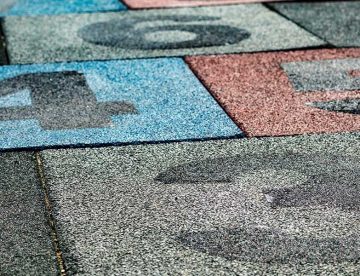
Why do many companies use rubber in various places and also as flooring? Because rubber has very good properties such as shock absorber, flexibility, sound insulation, non-slip surfaces, and long life. As a result, it is observed that rubber flooring is now used in several industries.
Types of Rubber Flooring
Rubber tiles can be used for many purposes:
- Rubber Flooring for Gym
Rubber flooring is used everywhere as gym flooring because of its high shock absorption and flexibility. For gym and fitness, you can choose tiles or prefer rubber flooring.
- Rubber Floor Tiles
Many companies offer high-density rubber floor tiles in 50×50 cm dimensions and 100×100 cm dimensions. The available thicknesses may vary, also. They are used especially for playgrounds.
- Rubber Flooring Rolls
A rubber flooring roll is generally 1.20 meters wide, in different thicknesses for different uses. They are suitable for use as garage floors and garage gym floors.
- Outdoor Rubber Flooring
Rubber is also the best material for outdoor safety areas such as playgrounds and pool sides and rubber tiles have water drainage due to the holes in their surface. Water can get inside the rubber floor tiles and the surface will always be dry.
If you have decided to install rubber flooring for your home or commercial application, one of the next decisions you must make is choosing between rubber floor tiles, rubber rolls, or rubber mats. Rubber flooring is a flexible flooring with many advantages that will help you make the right decision.
Pros of Rubber Flooring Tiles
One of the primary benefits of rubber flooring tiles is their ease of installation. The interlocking parts are easy to assemble and disassemble, yet sturdy enough not to come apart during use. Rubber tiles are extremely portable and can be reinstalled over and over again without being damaged. Interlocking rubber floor tiles are ideal for weight rooms, fitness centers, and home gyms.
You also have the option of straight edge rubber tile for a seamless look that comes in a variety of colors to suit your area. Rubber tiles with straight edges are perfect for use in workplaces, retail organizations, and schools.
Benefits of Rubber Floor Tiles
One can list the benefits of rubber tiles as follows:
- They have adhesive pieces with no edges or seams.
- They come in different thicknesses, textures, and colors.
- They are resistant to heavy foot traffic and equipment.
- They can be modified to fit any size space.
- No glue is required for installation.
- If rubber tiles are damaged, only one part needs to be replaced instead of the entire floor.
- They are easy to store and use elsewhere.
Rubber is a durable type of flooring that will last for years. It is tough enough to withstand heavy-duty use and high-impact activities while providing comfort, a secure, and slip-resistant surface.
Rubber Floor Tiles for Playground Surfaces
Rubber is widely used for flooring playgrounds with a high shock-absorbing effect. Rubber playground mats have a criterion called Critical Fall Height. CFH indicates the height of the highest position of the playground. Rubber is the best material that meets these criteria and if the child falls, the rubber surface will protect the child’s safety. Rubber flooring mats have also various colors, sizes, and thickness alternatives.
Avind and Best Rubber Tiles for Playground Surfaces
If you also want to get the best rubber tiles, you may get support from Avind, which is a specialist rubber flooring manufacturer. You will not only use the product for many years but also save money. For this reason, you can get in touch with us or visit our website. If you want, you can also create a request by filling out the related form. Our specialists will respond to your questions and forward your requests as soon as they can. You are welcome to ask us any questions you may have regarding the process and the cost of rubber tiles.
With our knowledge, expert team, and devoted staff, we will supply you with the best and timeliest service. Furthermore, as Avind, which provides the best rubber products both at home and abroad, we provide support even after the application has been submitted. With this guidance, you may handle any problems you may have fast and easily.
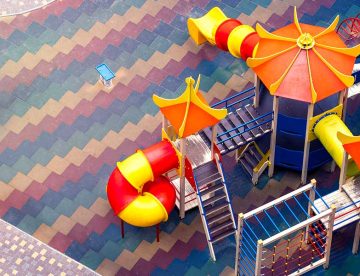
Children spend most of their day and free time playing. Since it is so important for kids to get fresh air and spend their time outdoors for their development, parents usually take them to playgrounds. What they ask for is their beloved children to spend their free time in a safe area. This bring us to the question of which space is the best for children’s play area to provide the best playing experience. In pursuit of an answer, we encounter playground rubber tiles as a surface covering as the safest choice for children.
Outdoor rubber flooring is a popular alternative to choose as one of the best flooring types for your playground, and also other outdoor activities for kids.
For many reasons, rubber tiles are the safest and among the best coverage option for children’s play areas. Rubber is generally the most preferred material when you want to provide a safe environment for children.
We can list several reasons below:
- They provide a cushioning effect on the surface, and support children when they trip and fall to the ground.
- Rubber tiles have a shock-absorbency feature which makes them highly useful in preventing injuries and bruises. Furthermore, they are non-slippery.
- They can be applied in any place you prefer. They are durable in any negative weather conditions ranging from high temperatures receiving lots of sunlight, to low temperatures with heavy rain, snow and strong wind etc.
- Wearing out or abrasions are not big problems. Friction force doesn’t affect the flooring surface severely.
- In case of any damage, they are effortless and fast to repair.
- Cleaning rubber tiles are so easy, you don’t need to spend lots of time or money for cleaning materials.
- Upon installing, they last for a long time. You don’t need to change and renew the tiles regularly.
Considering the reasons above, it is not a surprise that playground rubber tiles have been one of the most preferred flooring types.
But how to install playground rubber tiles? If you are curious about it, let’s discuss the steps to follow together.
The Steps for Installing Rubber Tiles for Children’s Playgrounds
Steps to install rubber tiles are practical. Our expert team will help you choose the best outdoor rubber tiles playground for children and install them to the preferred surface.
- Step: Prepare the Surface
In the first step, you need to prepare the surface chosen to be covered with rubber tiles. Proceed from deciding on the color, thickness of the material to be used, and shape of the tiles. Continue with clearing the debris, remove things completely, and tidy the surface. The floor should be flat and smooth. Then, do the necessary measurements. This step is important to decide on ordering the exact number of tiles.
- Step: Prepare the Materials for the Process and Align the Tiles
In the following step, prepare the equipment. Upon having a flat ground, apply the chemical adhesive to the surface and start interlocking playground tiles. They should be placed at a row spacing of 5-7 meters. Note that different types of rubber may require different techniques. We recommend you work with an expert company to provide the best service for you.
- Step: Chamfering Process and Necessary Adjustments
Continue with chamfering process. You should apply this process to the upper part of rubber flooring to form a joint. The material applied is 20-40mm in thickness. Add the bumps to the bottom to increase the adhesion to the surface. Apply the rubber coating to the glued surface. A reminder here: You should not apply less than 0.5 kg of chemical adhesive per square meter during the installation process of playground tiles.
You should continue this process until the entire surface of your playground is covered, and the tiles are pressed and locked together. Do the necessary adjustments if needed?
Playground Rubber Tiles Cost
The prices of rubber tiles to be applied on the play areas may vary depending on several criteria. Playground rubber tiles’ cost depends on the preferred color, size of the surface, and thickness of the material. The standard colors for rubber tiles are green, black and red. Their thickness is between 20 to 40mm, and they are produced with one or two layers. But let us inform you, apart from standard ones there are also different color options.
Upon choosing the best options for your play area, then the exact rubber playground flooring cost will be determined. Contact us to learn more rubber flooring and cost of poured rubber playground surfaces. For further information and price offer, you can fill the form below. Our expert team will get back to you as soon as possible.
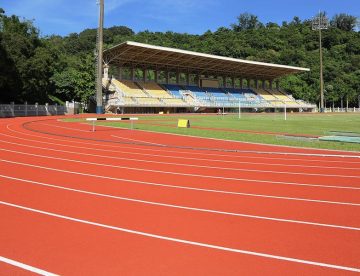
There are various types of running track surfaces, and we are frequently asked, “Which sort of running track surface is best for our sports facility?” Here are the four most crucial considerations to make before deciding:
- Who will make use of the running track?
- How fierce is the competition?
- What is the financial plan?
- Which company to choose?
Players’ speed, technique, and physical health can all be affected by the type of running track surface used. While a soft surface can enhance your running experience, a hard surface can wear down your body, especially your joints, over time. For this reason, the flooring type should be considered carefully. Running tracks must provide a comfortable running surface as well as player safety with their shock-absorbing surface. The surface requires little upkeep, and because of its non-slippery construction, runners never have to worry about dirt or slipping.
Types of Running Track Surfaces
Leading running track surface manufacturers offer different types of running track surfaces that we can list as follows:
1. Rubber Flooring
In most sports fields, rubber flooring tracks are preferred. SBR and EPDM granular raw ingredients are used to create black or colored sports field floors. The granules are combined with a binder and poured onto the floor or into molds while still hot.
2. Tartan Flooring
Tartan floor coverings, with their two layers of flexibility and stress absorption, are essential for sports and game activities. Its shock-absorbing and water-permeable properties protect the athlete’s safety while providing comfortable sports and activity options. Basketball courts, tennis courts, multi-purpose fields, walking, and jogging trails, and children’s playgrounds all make use of it.
3. Polyurethane Flooring
Polyurethane offers a synthetic running track and is the longest-lasting pallet surface material available. It is often more expensive to build than other track surfaces, but once built, it requires little maintenance or repair. It’s made to help people run faster while lowering their risk of running-related problems including stress fractures and torn muscles. For Olympic track races, the more expensive polyurethane material is frequently employed.
4. Asphalt Flooring
Asphalt is frequently utilized as a running track’s base, but it is also used as a surface material. The majority of asphalt roads contain rubber or other elements. Due to the fact that asphalt trails do not tolerate spikes well, most runners prefer to run on asphalt with cross-country shoes with rubber studs. Asphalt running track is a suitable trail surface material in general since it lasts a long time with minimum maintenance and is durable enough to allow athletes to run quickly.
Running Track Floor Covering Cost
Running track surface cost is determined by a number of factors. The consideration in this regard is the size of the sports field to be constructed and the characteristics of the floor that will be chosen later.
Avind and High-Quality Running Track Surfaces
If you prefer Avind, one of the leading companies that offer running track surfaces, you will not only use the product for many years but also save money. For this reason, you may contact or take a look at our website. You can fill out the related form and create a request if you wish. Our hardworking team and experts will get back to you as soon as possible and forward your requests to us. If you wish you may also ask us any question that comes to your mind about the installation process.
You may contact us for a high-quality indoor or outdoor running track and more!
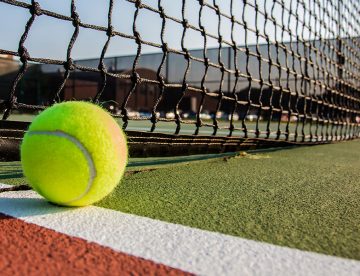
Tennis court flooring varies depending on the type of surface to be covered and whether the environment is indoor or outdoor. As tennis court surfaces, each surface and environment has its own characteristics and affects play styles as well. Although the tennis courts differ according to the floors, the standard court dimensions determined by the International Tennis Federation (ITF) are followed. So even if the type of tennis court surface changes, its dimensions remain the same. The only thing that changes between a tennis court and another tennis court is the material of the floor and this material has a limited effect on the game. The various tennis courts, which have various styles of play depending on the type of surface and whether the court is open or closed, have their own characteristics that affect the playing styles. The most popular of these are acrylic, earth, hard, rubber flooring and artificial turf. The Integral Integrated team can build all these tennis court surfaces for you.
How Is the Tennis Court Laid?
There are two main categories, synthetic and natural. You can obtain these materials from our company, which produces all synthetic tennis courts, or you can get a turnkey price including material assembly and technical support for the construction of your tennis court. Our Integral Spor company has completed turnkey tennis court constructions in many countries, especially in Europe, Central Asia and the Middle East. All tennis court flooring types, by-products and raw materials, which differ according to the needs, are produced by our company in Turkey. You can obtain all indoor tennis court flooring and outdoor tennis court flooring materials from our company, depending on the type of tennis court you want to set up. All the products you can buy from our company, which produces all kinds of synthetic tennis court flooring materials, are quality products. These products are respectively synthetic grass court surface (18mm – 30mm), acrylic tennis court surface (standard and cushion surface), rubber floor for tennis court (tartan surface) and polyurethane tennis court surfaces.
International Tennis Federation
The International Tennis Federation (ITF) has developed the “Court Pace Certification” system to purchase tennis court flooring and to determine the most suitable tennis court floor type and speed for the desired specifications. Accordingly, there are 5 types of tennis court flooring. The International Tennis Federation (ITF) has listed the types of tennis court flooring as follows;
- Category 1 (slow)
- Category 2 (medium slow)
- Category 3 (medium)
- Category 4 (medium speed)
- Category 5 (fast)
While making these classifications, the International Tennis Federation (ITF) took into account all tennis court flooring materials such as acrylic, soil, artificial grass, polyurethane and rubber and arranged all categories according to these surfaces. Each product is tested according to the class you want to use and it is meticulously checked whether it complies with the rules specified in the International Tennis Federation (ITF) regulation. You can choose the tennis court you want to buy from our company, which produces all the classes listed above, according to the International Tennis Federation (ITF) classification. In addition, the International Tennis Federation (ITF) seeks the validity of the “Recognized Courts” Certificate for tennis court surfaces in all professional competitions played, regardless of big or small. The Recognized Courts Certificate is given as a result of special tests and practices conducted by the International Tennis Federation (ITF), and it is possible to obtain a Two-Star ITF Recognition Certificate or a One-Star ITF Recognition Certificate according to these tests. Your certificate is valid for 10 years from the date of receipt. If you renew your tennis court, your certificate will also be renewed. Otherwise, your certificate will become invalid after 10 years. Acrylic surfaces approved by the International Tennis Federation (ITF) are in 5 different categories and generally consist of 3 layers.
In addition to its high game performance, it provides the athlete with the advantage of easily controlling himself and the ball with its non-slip surface. Acrylic tennis court surface is very affordable in terms of cost and is among the most preferred surfaces.
Tennis Court Flooring
Hard surface is the most widely used tennis court flooring materials in professional arenas such as the US open and Australian open at Grand Slam tournaments. Maintenance costs are quite low and once a week washing is sufficient. If the infrastructure required by the tournament standards is provided, it can be played for a long time, such as 7-8 years, without any maintenance. It can be played on hard-floored tennis courts in summer and winter. Private tennis clubs mostly prefer this tennis court surface. Hard surfaces are usually only painted and used in areas such as public tennis court surfaces, tennis court surfaces in schoolyards. The clay tennis court surface, which is also used in professional arenas such as the French open tournament, has high durability. Due to the quality of the materials we use, in addition to the flexibility of the soil, the moisture on it dries quickly and does not make mud. The flexibility of the soil allows the games to be played more comfortably. The balls leave a very clear trace to take your game quality to the next level. Synthetic grass varieties are sand-based and thus ensure the longevity of your tennis court. Synthetic grass tennis courts can be built in any size needed for amateur use, apart from the standards set by the International Tennis Federation (ITF). It allows it to be used in different playgrounds such as basketball or volleyball.
Tennis Surfaces
Tennis; It is played professionally on three surfaces: asphalt, grass and clay. Playing on asphalt from these surfaces has become extremely easy today with the contributions of municipalities and schools. However, it is quite rare for casual players to play on the turf. If you are thinking of turning your backyard into a tennis court, you are at the right place. Our company not only produces tennis court materials and makes professional tennis courts, but also designs small backyard tennis courts. The dimensions of the tennis court are determined by the International Tennis Federation (ITF) and are the same for all professional courts. The inner line dimensions of the tennis court are accepted as 23.77 meters long and 10.97 meters wide. The minimum external dimension of the tennis court is designed to be 36 meters long and 18 meters wide. For non-professional tennis courts, planning can be made according to the scales or field width you want. The tennis net consists of 12.80 meters of ropes connected to each other. The height from the middle of the net is 91.4 cm and its net size is 4 cm x 4 cm. The band surrounding the net is generally 5 cm wide. A 5 mm thick steel wire passes through the upper band to stretch the net between the two posts.
Tennis Court Flooring Costs
Tennis court flooring cost varies according to many variables listed above. Tennis court construction cost; Our calculations for various tennis courts are based on square meters, depending on whether a certificate will be obtained, surface type and surface speed. If you want us to deliver your turnkey tennis court ready to you, please ask for a price quote. Your tennis courts are carefully made by Integral Spor for indoor or outdoor use according to your wishes. If you let us know the surface and details of your tennis court you plan to build, we can send you an offer as soon as possible.
You can fill out the form below for detailed information and free price information. Our expert team as soon as possible will get back to you.

